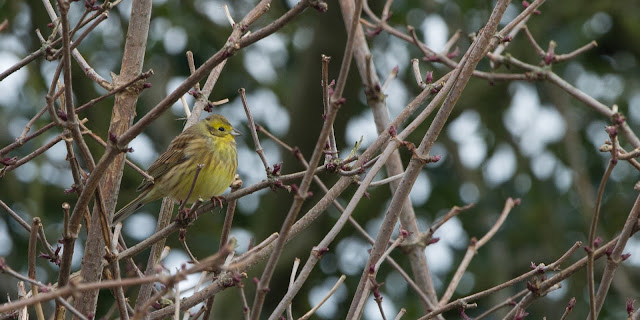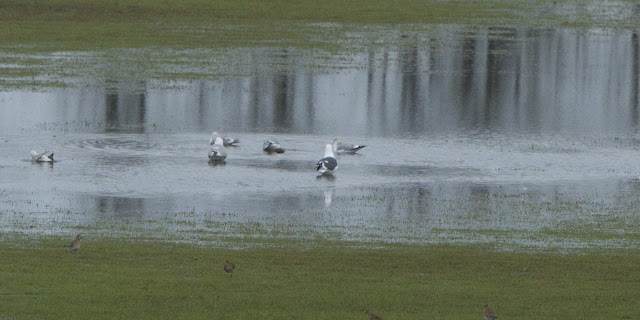The woodland is appreciably noisier each time I visit as the birds begin to jostle for territory, having spent the coldest months grouped together. The great tits are by far the most vocal, but I also heard treecreeper, goldcrest, blue tit and blackbird. A strange call grabbed my attention, so I followed the sound and was surprised to find redwing deep in the wood. Three or four birds were working the ivy-clad tree trunks with a pair of mistle thrush, scaling the dark green spiralled staircase and picking the cloudy indigo berries. I also noted green sandpiper, goosander, cormorant and snipe (my first at this site).
Back in Thrintoft, I was tipped off by Nick Morgan's blog that meadow pipits had been present yesterday at the edge where our patches intersect. I soon caught up with them and also had good views of skylark, pied wagtail, grey wagtail and six more snipe.
In fact it turned out to be a very good day for snipe; I turned up three more as I completed the river loop. As I followed the river, I was alerted to a predator by the explosion of small birds behind me. No sooner had I realised what was going on, a crow chased a steel blue raptor into a thick hawthorn thicket in front of me. Merlin? I inched closer and was soon able to make out the distinctive shape of a small bird of prey plucking it's victim in a low branch. Branches concealed its features and I couldn't make out whether it was a sparrowhawk or the merlin that's taunted me this month. When I got too close, it dropped from the tree and flew low over the field and river and out of sight. Alas, it's white rump and short wings meant sparrowhawk and my quest for merlin continues. In better news I turned up yet another woodcock, this time at a third location the locals call 'the black hole'... I really must have my eye in for them this year!
The cold got the better of me and I headed inside. I offered to take the wife out for coffee and as we returned from town I spotted a large bird in the sky that dwarfed the crows that mobbed it. Red kite! My first one locally, but a very familiar bird to me thanks to the time I've spent in the Chilterns with family. A very pleasing footnote to an interesting day.





























